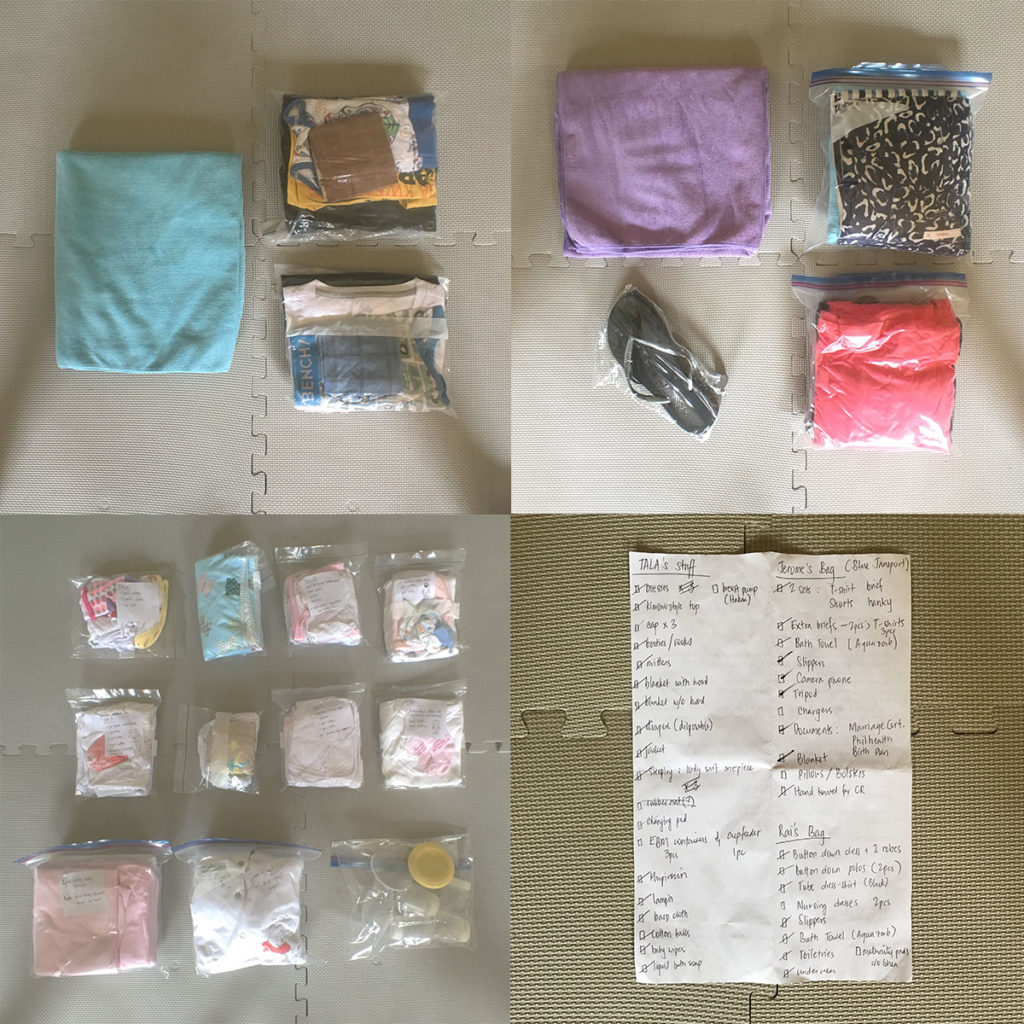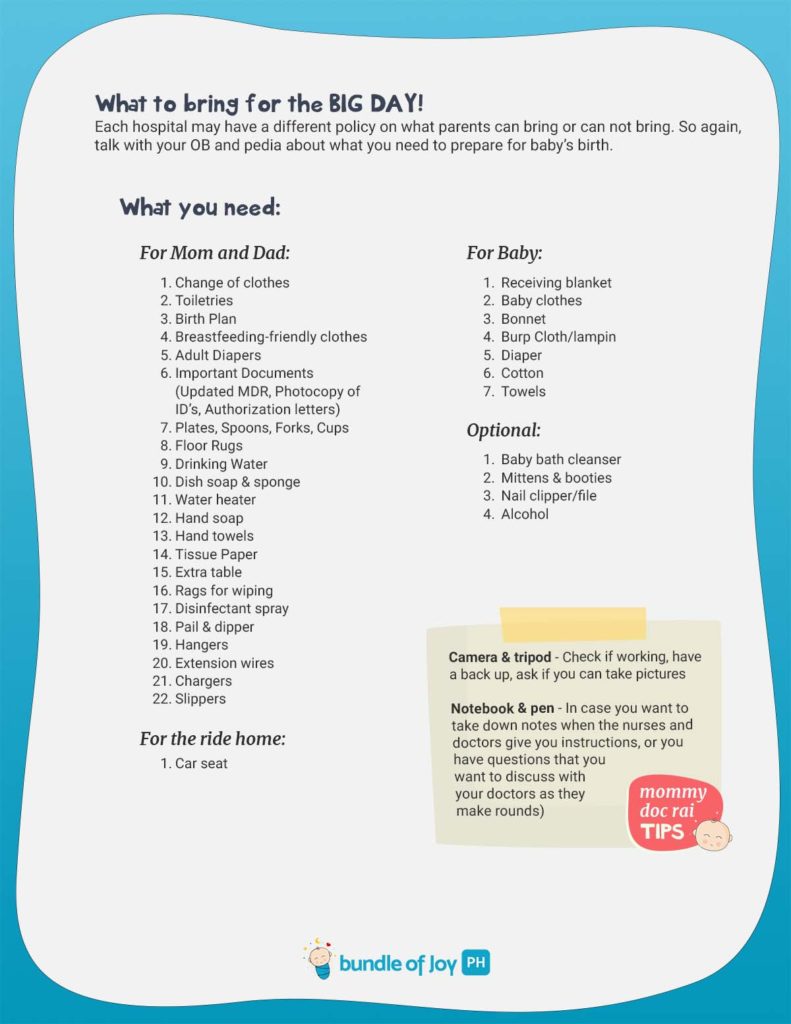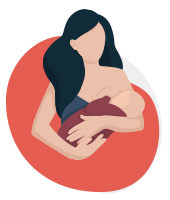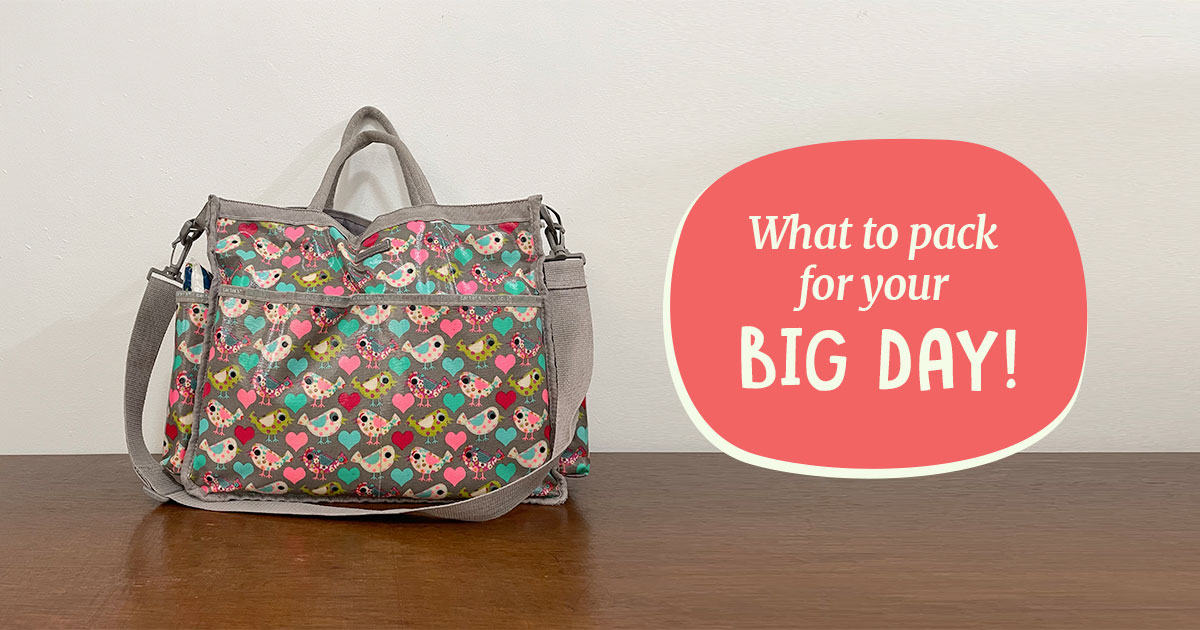What Should Be In A Pregnancy Go Bag. The Ultimate Check List!
In our years of living in Manila, we’ve learned that having a “Go-Bag” is essential. We had one in the car which contained clothes and toiletries that will last us for 2 to 3 days. We actually used it several times during big storms when traveling home from work was out of the question. This saved us a trip to the mall to buy a new set of clothes for the next day or two, or three.
Right now, we have a go-bag at home which contains all of our important documents like passports, birth records, certificates and etc., sealed in a waterproof bag. In case of an extreme emergency, we just grab it and go.
Go-bag
Google
Google defines it as “a bag packed with essential items, kept ready for use in the event of an emergency evacuation of one’s home.”
During our third trimester of pregnancy, Raissa was advised by her mommy friends to prepare a hospital go-bag early, just in case the baby suddenly pops out before our due date. Knowing Raissa, she has already listed down all the things needed for our go-bag. Since we are used to packing light, our clothes are usually packed in sets and each set is placed in a zip lock bag. It makes for easy organizing, sorting and packing. A set would usually contain a shirt, underwear, shorts/pants, hanky and socks.
She prepared our clothes (segregated in 3 piles; one for me, one for her, one for baby), toiletries and other essentials (baby’s medical records, marriage certificate, meds and birth plan among other things). She even drew little illustrations on the contents of Tala’s clothing sets.

Raissa prepared everything quite nicely. I checked her list and took care of the other stuff like laptops, chargers, cables and other things. Everything was planned to a T. Just as we wanted it.
But, needless to say, we still forgot to bring a few more essential stuff. You might think that these items are available in your hospital room already, but in some hospitals they are not. Depending on the number of days that you will be spending in the hospital, you might want to bring the following:
- Drinking Water – You will need to bring a lot. We drank an average 6-8 liters/day. You can always buy from the hospital canteen but it can be a lot more expensive than buying from the grocery store.
- Plates, mugs & utensils – Most big hospitals have a cafeteria. The food, in my experience has always been good. You can always eat in the cafeteria but we preferred to eat in our room. If you want to take out cafeteria food, they will just wrap it in a plastic bag. If you don’t have plates and utensils, you will have to pay extra for the disposables. And again, they charge a lot for these and it piles up in your garbage bins as well. Better bring your own.
- Dish soap & sponge – Obviously, you will need to wash the dishes after you use them.
- Snack items – Fruits, chips, chocolates and etc. Whatever keeps the preggies happy.
- Floor rugs – To keep floors clean and dry.
- Bathroom slippers – To keep the bathroom floors clean as well. Besides, the bathroom floor is really cold!
- Hand towels – Instead of using tissue paper, you can use reusable/disposable hand towels.
- Water Heater – Some hospitals don’t have a hot & cold shower. You will need to bring your own water heater if you want to take a warm bath. The water heater will also serve hot water for your needs, in my case, hot water for my coffee.
These are some of the things that we forgot to bring and once we got settled into our room, we realized that the initial list we made was just partially complete.
We did not make the same mistake on our second baby as we’ve already come up with a list which you can download and print as well.

Download the Pregnancy Go-Bag Checklist ♥️
Another tip, you can even start packing on your second trimester. Keep in mind though that you might have to repack towards the end of your pregnancy, since you might still receive baby clothes and other stuff that would fit your baby better.
And oh, don’t forget to make your birth plan. Print a few copies to give to your doctor, tape one in your room and maybe one for your chart. Highlight some key points for quick reference later on.
If you think we missed something or if you have anything to add to this list, please feel free to leave a comment below. See you in the next post!
This article has been updated since it was first posted in 2018 from our previous blog site. In the light of the COVID-19 pandemic, please make sure to add these to your list of things to bring: 1. Face mask 2. Face shield 3. Hand sanitizer/alcohol 4. COVID vaccination card/record Also, please check with your hospital first and confirm what are the requirements for admission, as well as what items are allowed since each hospital will have their own policy. Note that policies may change since COVID-19 is still evolving.

Getting ready for your baby’s arrival? Worried about establishing your milk supply? Want to learn the different breastfeeding positions or just know the life-saving benefits of breastfeeding your baby? Our Breastfeeding and Babycare online course will help you to prepare for the arrival of your little one and how to exclusively breastfeed your baby without the burden of not knowing where to begin.

